The 10 most beautiful art deco buildings on earth
They are enduring symbols of the glamour of the roaring 1920s and ’30s. As these grand dames show, they don’t make ’em like they used to.
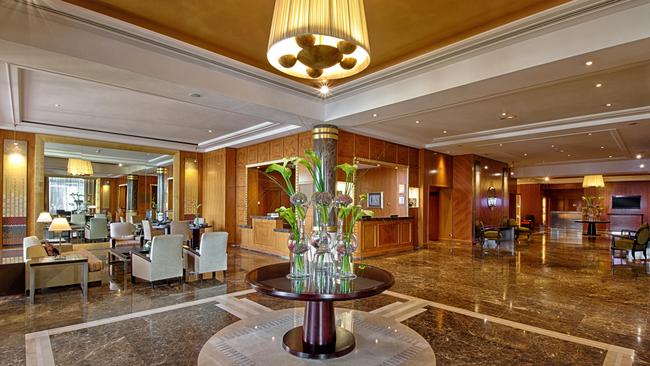
Palais de la Mediterranee, Nice
Art Deco was first introduced at the Paris World’s Fair in 1925, where France represented two-thirds of the exhibits, so it’s no surprise the country is home to some of the world’s best exemplars of the style. Opened in 1929 as a theatre and casino, the Palais de la Mediterranee along the beachside Promenade des Anglais in Nice is a fine example. Originally hosting performances by the likes of Josephine Baker and Edith Piaf, the Palais was reborn as a hotel in 2004. The original white granite facade, featuring wondrous bas reliefs dedicated to Poseidon, remains in place. Marbled floors, columns and mirrors line the grand lobby, while grander still is the pool area affording glimpses to the Bay of Angels through colonnades.
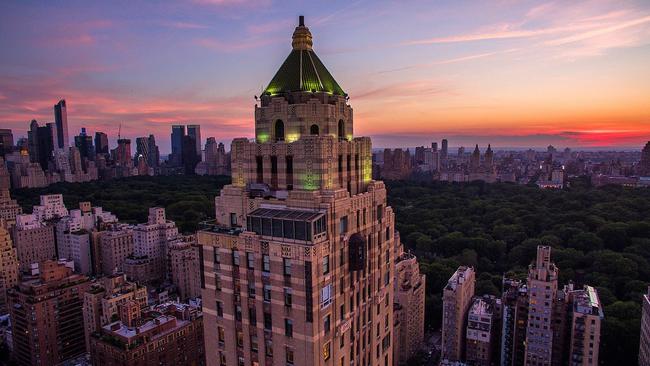
The Carlyle, New York
Walk through the gold revolving doors of this elegant Upper East Side hotel and you’re transported to old New York. In the lobby, original streamlined motifs from the 1930s complement gold-tufted velvet couches and bulging bouquets of fresh blossoms. Recently renovated “modern Art Deco” guestrooms have been designed by Tony Chi and Thierry Despont. At Bemelmans Bar, slink into one of the brown leather booths, order a cocktail and study the walls adorned with large-scale murals depicting Central Park. They were created in 1947 by Ludwig Bemelmans, author and illustrator of the Madeline children’s books; he received free board at the Carlyle in exchange. You’re likely to spy a celebrity while staying here, but act cool; discretion is valued, so much so that when two of the Beatles stayed at the same time after the band broke up, neither knew the other was in residence. Which two, we’ll never know.
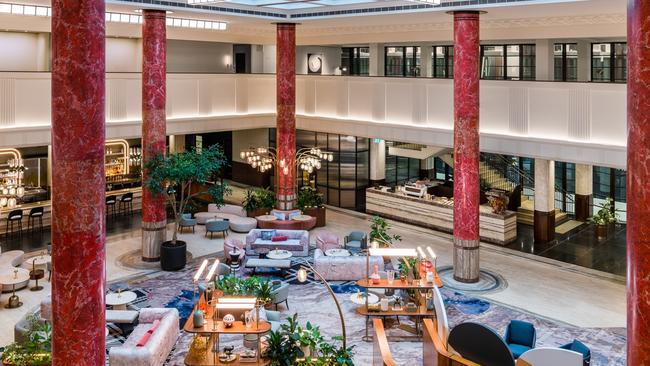
Kimpton Margot, Sydney
Hints of the former Metropolitan Water, Sewerage and Drainage Board building, which in 1939 was Sydney’s tallest, remain evident at Kimpton Margot. The bas relief depicting aspects of the water industry still gleams on Pitt St, and the original water bubblers remain as a homage to the heritage-listed building’s past. Also intact are the glorious red scagliola columns and the giant skylight, under which guests lounge on plump velvet couches enjoying a cocktail from the Wilmot Bar before sitting down to dinner at Luke’s Kitchen, by chef Luke Mangan. Grand tiled hallways lead to elegant rooms with Art Deco accents, including zigzag and chevron patterns, as well as marble and chrome. Deco-loving pet-owners are catered to as well, with furry friends welcome – so long as they fit in the lift.
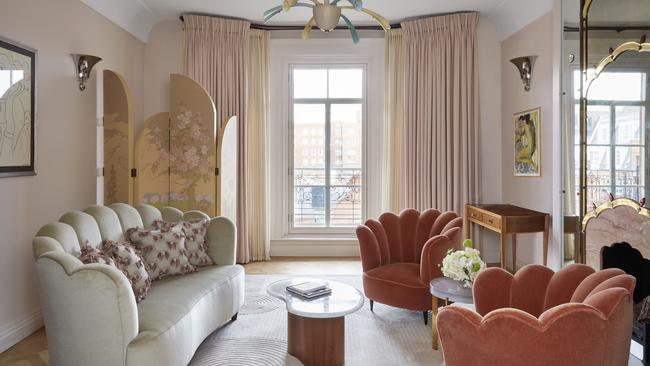
Claridge’s, London
Though the original building dates back to the 19th century, this celebrated Mayfair hotel had its decorative Art Deco transformation in 1929. Deco pioneer Oswald Milne redesigned the lobby and added a wing of rooms and a ballroom. The style remains to this day. The ballroom, which reopened in 2021 after a full restoration, features a three-tiered ceiling and Palladium-leaf pilasters. Basil Ionides-designed glass screens gleam in the grand foyer and reading room, and an elegant Lalique glass panel stands above the entry to The Fumoir cocktail lounge (order the negroni). Come December, the black-and-white chequerboard marbled lobby displays a Christmas tree conjured by a different designer every year; last year it was Sandra Choi, creative director of Jimmy Choo.
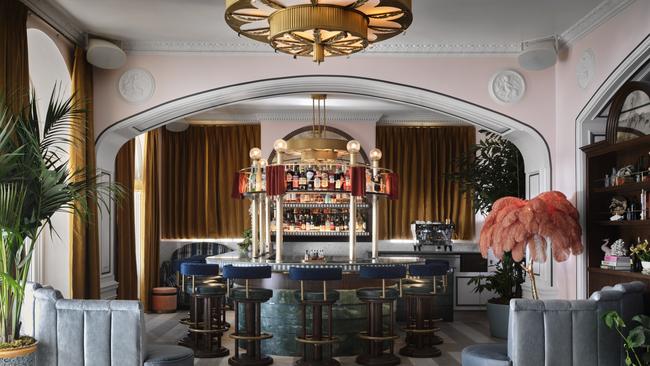
The Georgian, Santa Monica
The turquoise exterior is hard to miss, but it’s what’s inside the newly spruced Georgian on Santa Monica’s Ocean Ave that will truly impress. BLVD Hospitality, the developer behind downtown Los Angeles’ deco Ace Hotel, was tasked with transforming the 1933 building from its last incarnation as a retirement home. Once the setting for a tryst between Clark Gable and Carole Lombard, it has been returned to its glamorous roots as a boutique beachside bolthole. The blush-coloured walls, custom cerulean velvet furniture and gold curtains in the lobby offer a hint of the fun to come. Rooms feature bold tangerine velvet scalloped headboards with gold-plated inset switches and there’s a record player should you want to pop on some Glenn Miller. There’s even a button to press for express champagne delivery to get you in the mood.
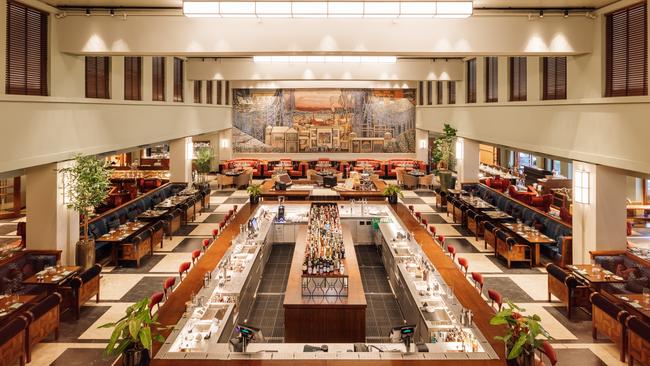
Sommerro, Oslo
Built in 1931, the former headquarters of Oslo Lysverker, the city’s electrical company, instantly became Oslo’s hippest hotel when it opened in September last year. Deco details include an artwork on the wall of the bar inspired by Norway’s exhibit at the Paris World’s Fair in 1925. The giant spiral staircase and a gilded theatre with overstuffed sofas are a tribute to the period in the 1930s when Norwegian filmmaker Tancred Ibsen (grandson of Henrik) dominated the local film industry. The 231 guestrooms and suites exude warmth in gold and pistachio tones, with oak parquetry flooring and black and pink chequered tiles in the bathrooms.
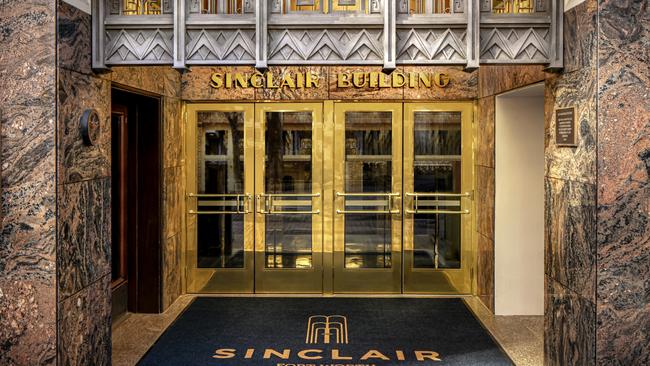
The Sinclair, Fort Worth
A standout among the Art Deco structures on Main St symbolising postwar optimism, The Sinclair was built in 1930. Commissioned by Richard O. Dulaney to house the headquarters of Sinclair Oil Company, the building is adorned with glorious geometric ornamentation, including dark green spandrels and Meso-American architectural motifs. By the 1980s it had fallen into disrepair, but interest in downtown saw The Sinclair resurrected as a new hotel in 2019 as part of Marriott’s Autograph Collection. Original marble, wooden flooring and ceiling coves have been preserved in suites and public areas, accented with wall sconces and layered textures of leather, brass and glass.
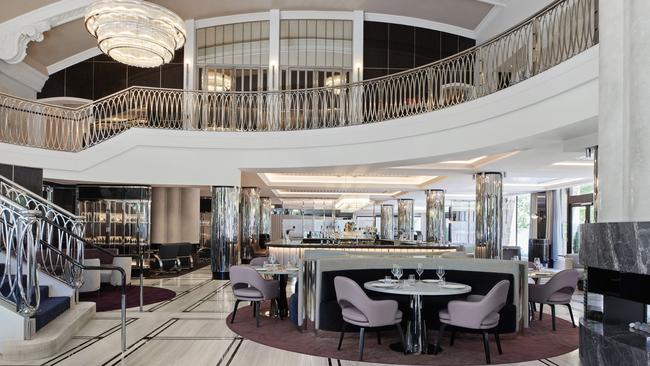
Royce Hotel, Melbourne
Stripped back to a shell, the designers of the new-look Royce Hotel overlooking leafy St Kilda Rd were given a blank slate inside the heritage-listed 1928 building. The two-year restoration has been worth the wait, and the reimagined former automobile showroom positively gleams. The grand lobby features a curved marble fireplace, a 2m-wide chandelier and a sweeping staircase with chrome balustrades as shiny as a Rolls-Royce Spirit of Ecstasy hood ornament. Of note are the six two-storey loft-suites where the mechanic workshop was once located. Here, original cornicing and high ceilings meet rich textured velvets in pops of aubergine and blue.
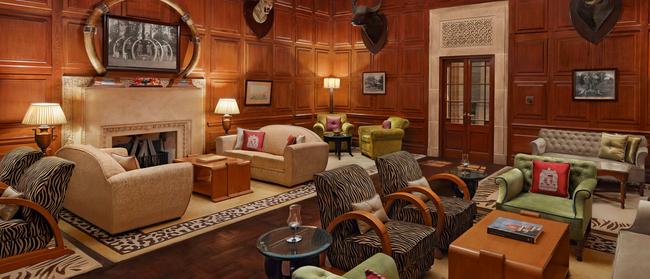
Taj Umaid Bhawan Palace, Jodhpur
Built between 1928 and 1943, the Taj Umaid Bhawan Palace Hotel is part of one of the largest private residences in the world, still home to the Jodhpur royal family. Looking over the Rajasthani city, the hotel is a fusion of Art Deco and Indo-Saracenic styles. Deco aficionados should head directly to the subterranean swimming pool to marvel at walls adorned with murals by renowned Polish poster artist Stefan Norblin. The theme extends to the guestrooms and suites, the most striking of which is the Maharani Suite, kitted out in the late Maharani of Jodhpur’s favourite combination of pink, black and chrome. Elsewhere, there are geometric eagle and winged-phoenix motifs, and a museum showcasing design from the era, including a 1927 Silver Ghost Rolls-Royce.
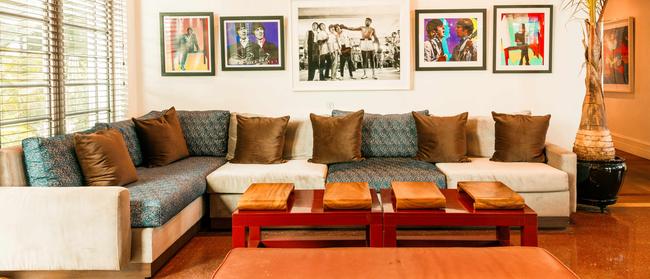
The Betsy, Miami Beach
The vibrant Art Deco Historic District in Miami is home to more than 800 sorbet-coloured designated heritage buildings, including the former Carlton Hotel. Reincarnated as The Betsy, the property comprises an Art Deco wing joined to a colonial wing (the former Betsy Ross Hotel) by what’s known as The Betsy Orb; a spherical sky bridge. The public spaces in the Art Deco wing include the grand Carlton Room, the former lobby of the Carlton. It features soaring ceilings, tiered lighting and decorative brass, mirrors and velvets in ocean-inspired palettes. In keeping with the era, there’s a jazz club where performers play every night, and a discreet speakeasy bar in the basement.



To join the conversation, please log in. Don't have an account? Register
Join the conversation, you are commenting as Logout